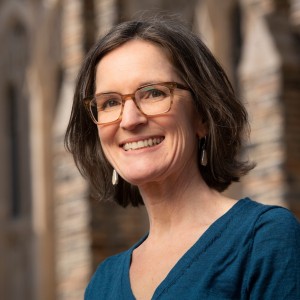Nearly 25,000 square kilometres of the United States have burnt so far in 2022. Much of the west of the country is in extreme drought, wiping out crops and drying up drinking-water supplies. In Kentucky, rain-driven flooding has caused at least 39 deaths this summer, and US coastal communities have grappled with record-breaking high-tide flooding brought on by sea-level rise. Devastating heat has besieged much of the Northern Hemisphere, taking lives and damaging roads, railways, power grids and other infrastructure.
As climate change impacts become more visible and urgent, people in the United States are just waking up to the severity of the problem they helped to create. Decades of political impasse ended in August, when US President Joe Biden signed into law the first major federal policy to confront the climate crisis. Large shifts in public opinion did not drive this development. It came about through a political strategy rooted in social-science research about the power of economic interests, the barriers to collective action and the incentives for elected decision makers. Managing climate impacts requires research similarly informed by knowledge of political systems.
I’ve studied US climate politics for more than a decade. My collaborator, Patrick Egan, a political scientist at New York University, and I have documented public resistance to treating climate action as a political priority. Because US citizens thought so little about the far-reaching consequences of climate change, they were susceptible to partisan messages and the vagaries of local weather conditions when forming attitudes about tackling the problem. Both factors stood in the way of building mass support for climate action.

Climate change won’t wait for future innovation — we need action now
In 2016, we showed that for the great majority of the US population, changes in daily weather over time had produced conditions that were, quite simply, more pleasant (P. J. Egan & M. MullinNature532, 357–360; 2016). Winters had become warmer for nearly everyone, and few were paying the price by enduring hotter, more humid summers.
We reported this finding not in celebration, but as explanation. At the time, US media coverage of climate change had stalled, and the issue was low on the agenda of political elites. People, left to form opinions through personal experience, had little reason to demand a policy response. US residents were enjoying winter barbecues and tennis games; the cover of theNature问题我们报告我们的发现显示New Year’s Day swim in New York City, and the caption quoted a participant as saying, “It’s like summer out there.”
We warned that a rise in summer temperatures, projected by climate models, would soon flip the switch and lead to a decline in ‘pleasantness’. That day might already be here: US daytime summer temperatures have remained consistently high over the past six years.
As the weather has changed, so have climate politics. Whereas US citizens once associated climate change with warm winter days and melting polar ice, media coverage increasingly links it with extreme events, sea-level rise, water scarcity and other harmful impacts that are close to people’s immediate experiences. Climate change now receives substantially more media attention, and social movements have ramped up, fuelled by climate-justice advocates and global youth mobilization.

How climate law can help to prevent the next pandemic
The public response has been split. Among Democrats, climate change has become a top-priority issue. But survey data reveal little change over the past six years in climate concern among US citizens overall, because the partisan gap is wider than ever — and wider than in other countries.
As is clear from the US Congress’s party-line voting on the climate bill, the political context for US climate policy remains constrained. Tellingly, in a year in which US residents were exposed to a barrage of climate-driven emergencies, the bill still had to be crafted in a way that front-loaded its benefits and minimized direct costs to a public still ambivalent about strong climate action.
这矛盾延伸到态度vestments and transformations needed for climate adaptation. To meet this next challenge, we need to understand and surmount the political hurdles to adaptation. Research on identifying adaptation processes has focused on effectiveness, efficiency, equitableness or justice as the basis for evaluation. Less attention is being paid to questions of political feasibility and political behaviour in a context in which decision makers and the public have been slow to recognize a growing emergency.
Research questions abound. How can elected officials and their constituents be motivated to support public spending on infrastructure and resilience projects when the benefits might not be tangible? How can we harness firms’ interest in protecting their own assets to produce community-wide risk reduction? What institutional reforms can enable locations for housing and infrastructure projects to be chosen so as to minimize climate injustice and harm? And can climate change and its impacts be turned into a less polarized problem that both major US political parties seek to tackle, offering competing visions for a more secure future?
With climate change already costing and disrupting lives, it is time to bring political knowledge to bear on decisions about protecting people from its consequences.


 How climate law can help to prevent the next pandemic
How climate law can help to prevent the next pandemic Climate change won’t wait for future innovation — we need action now
Climate change won’t wait for future innovation — we need action now




